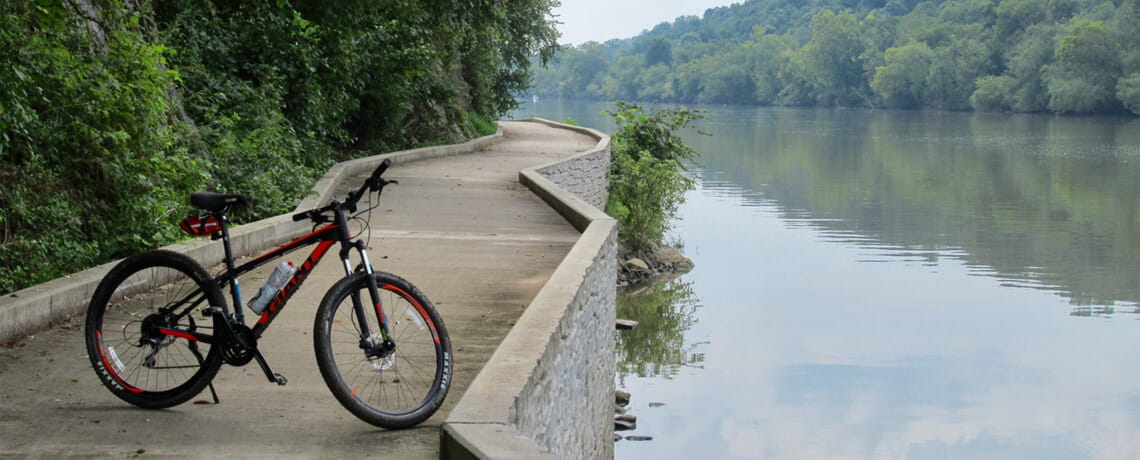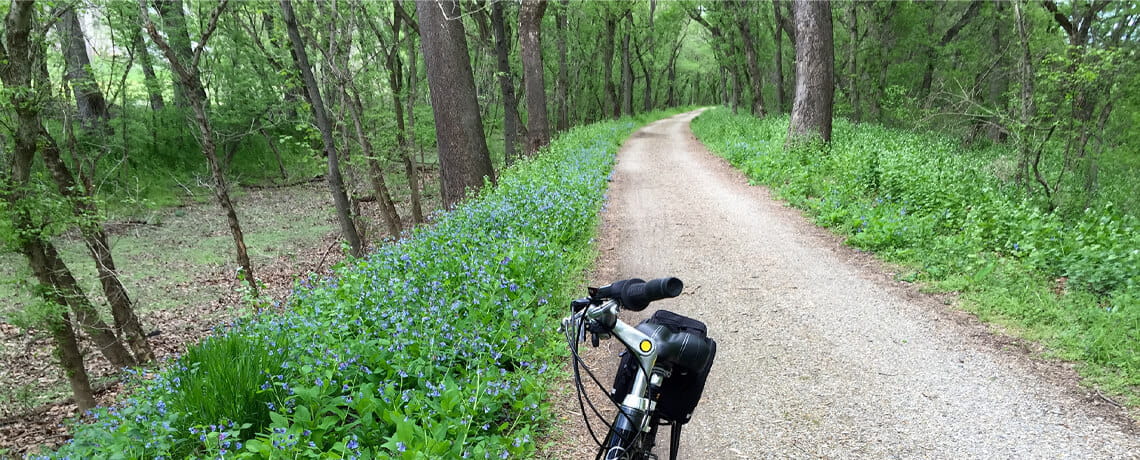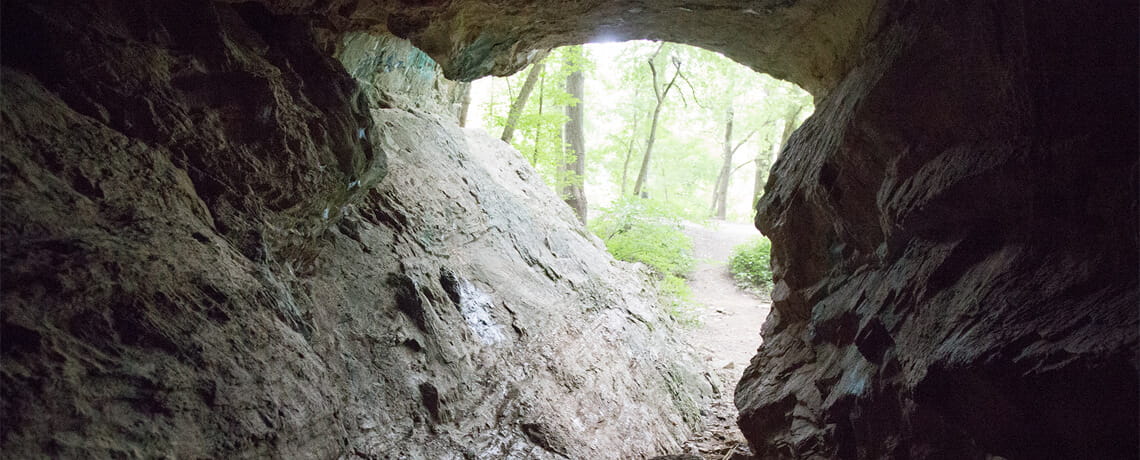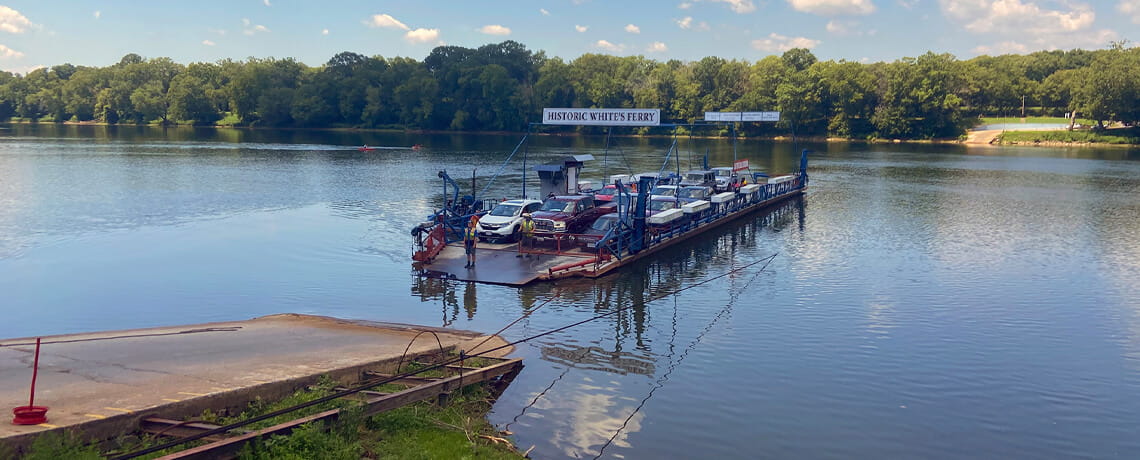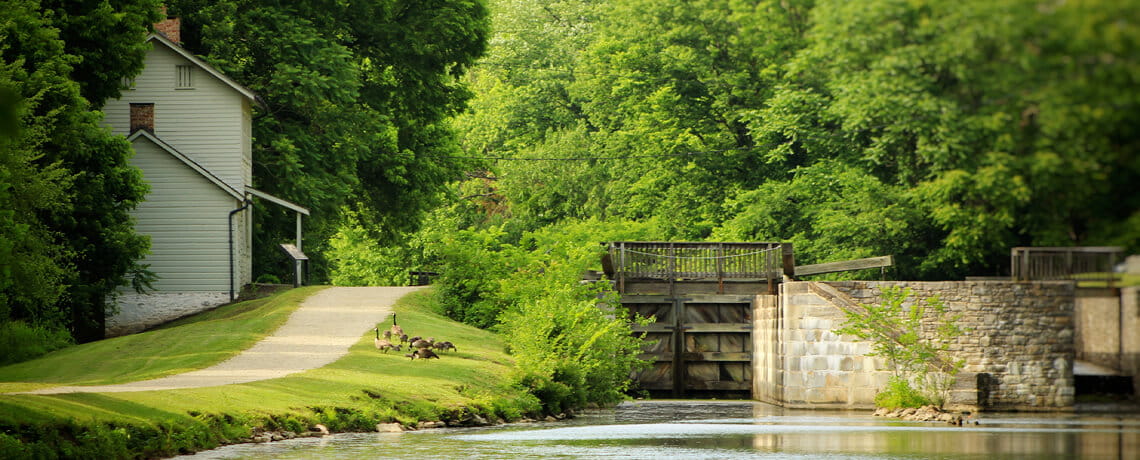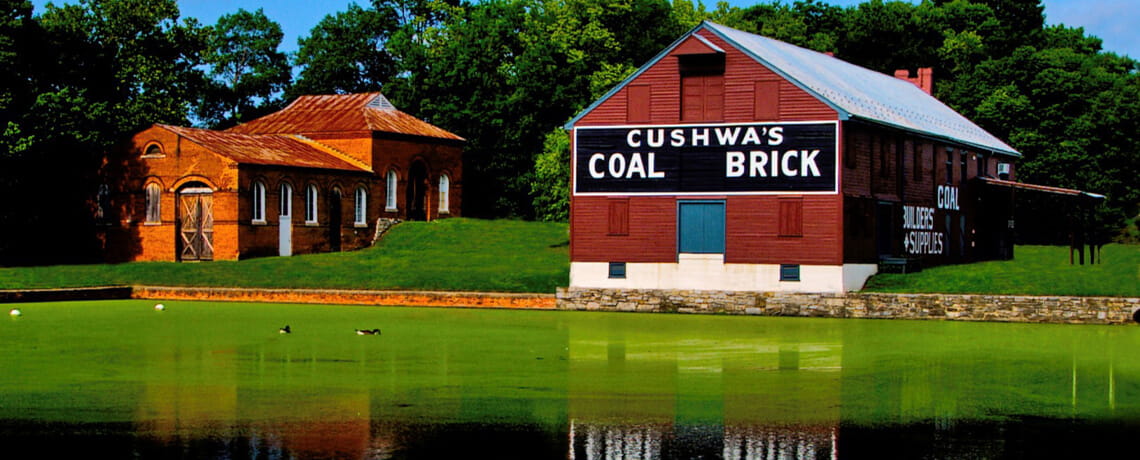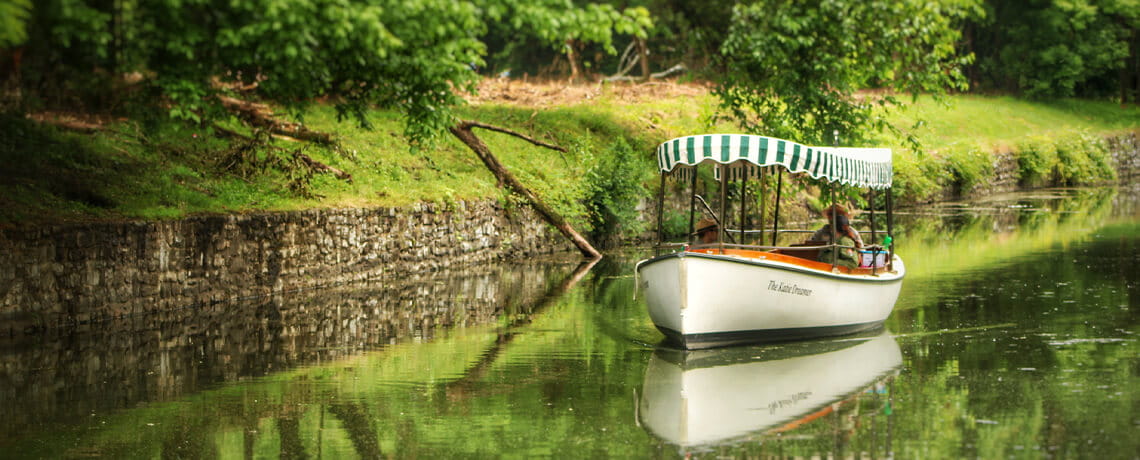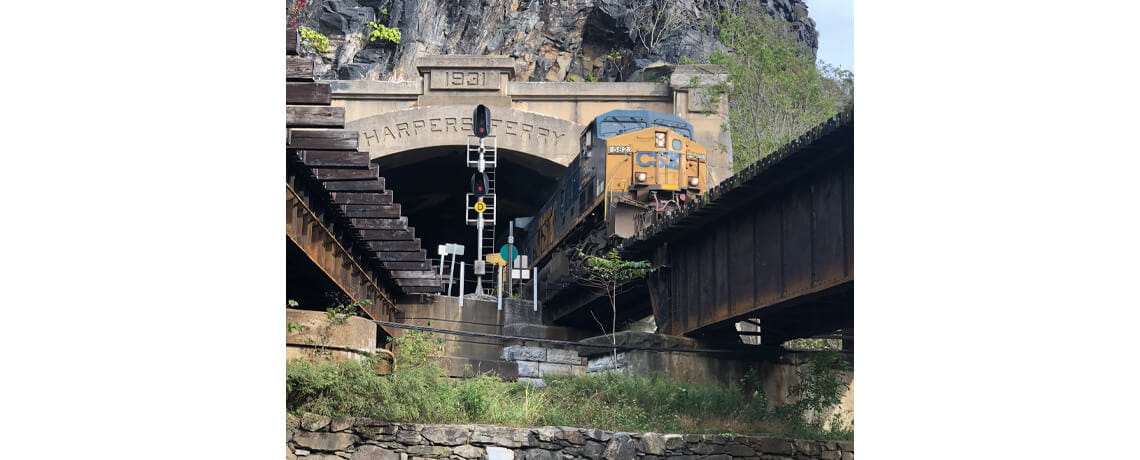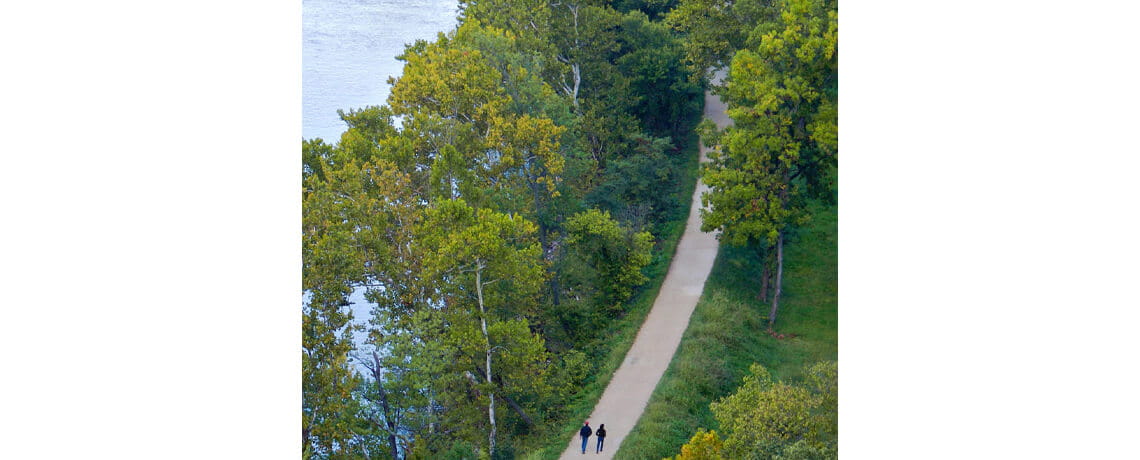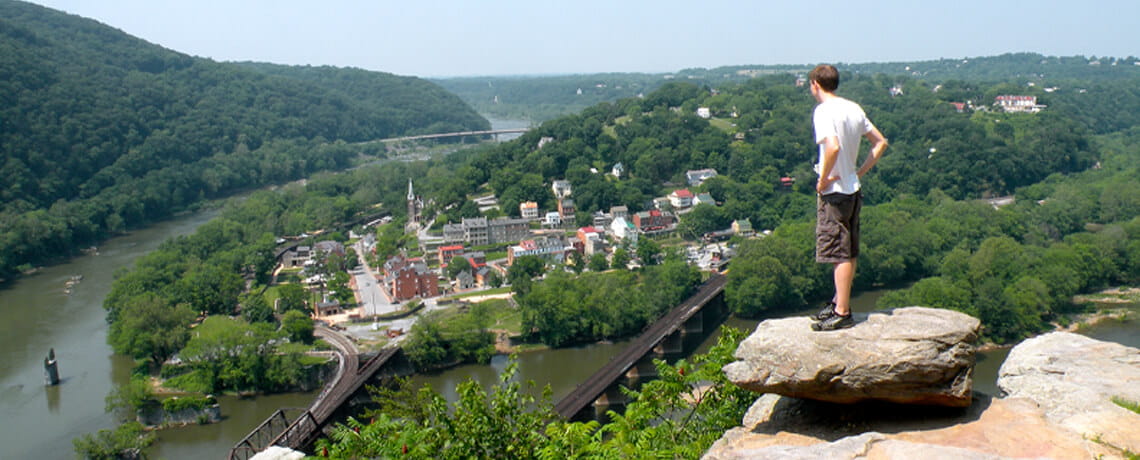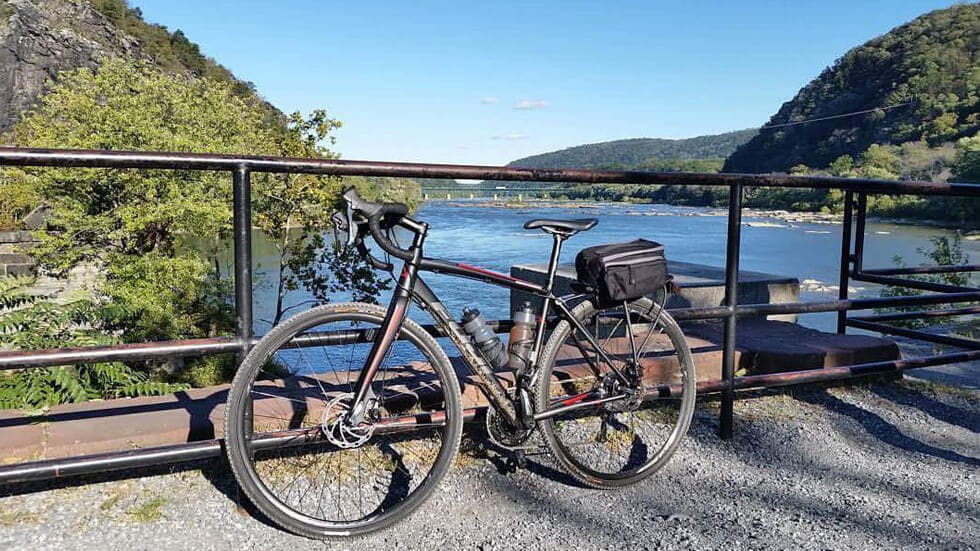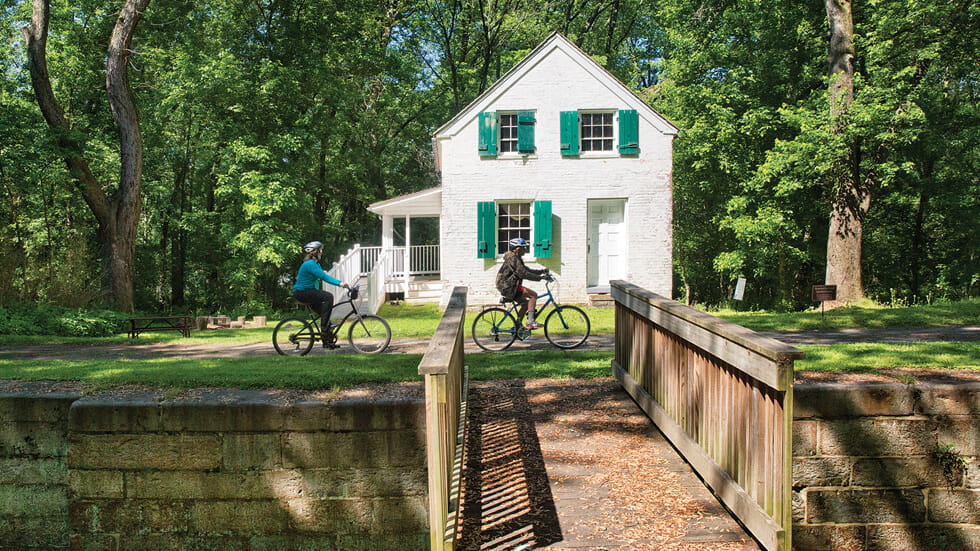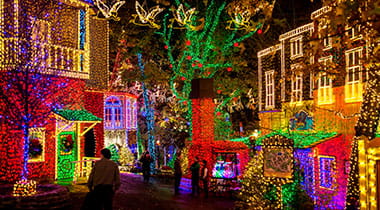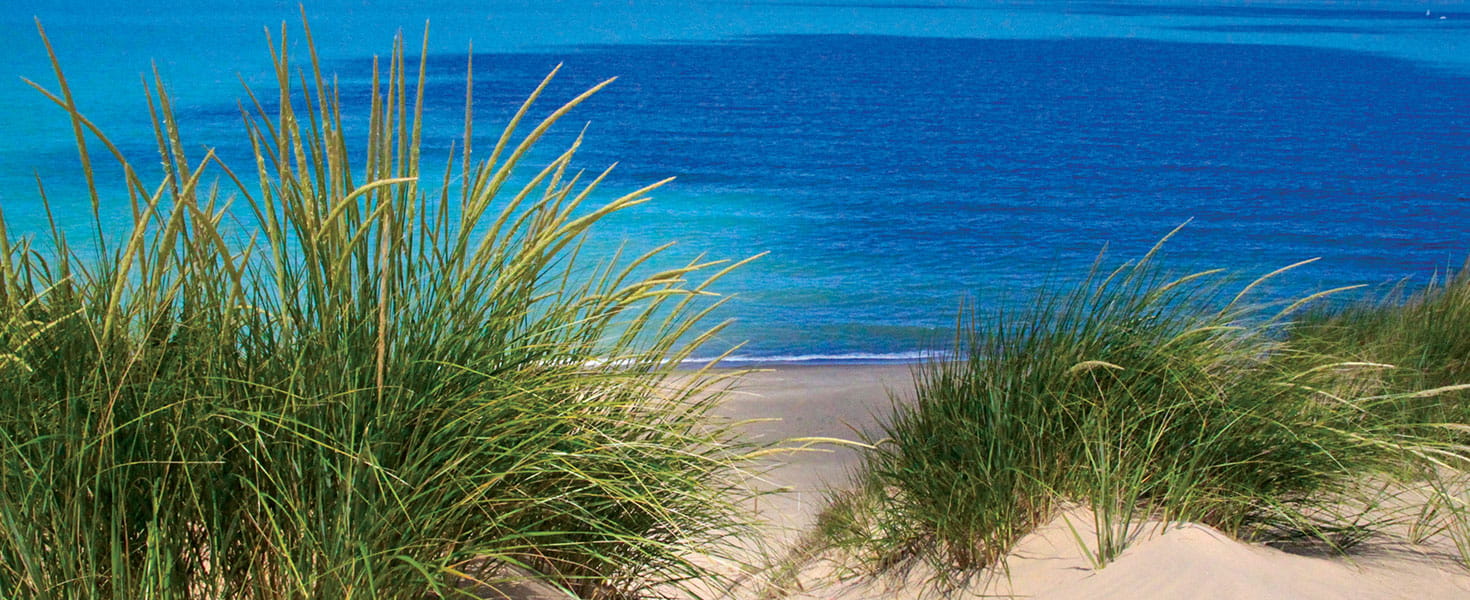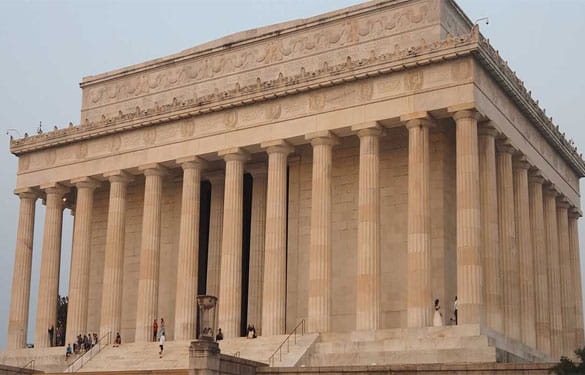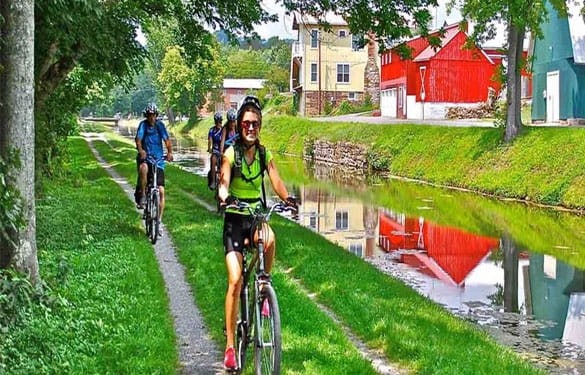You aren’t actually cycling in the Potomac when you bike the Chesapeake & Ohio (C&O) Canal towpath near the section of the river known as Big Slackwater, but it sure feels as if you were. Here, the elevated, concrete bike trail skirts the river on piers built eight feet above the water. The retaining walls for the elevated path were cast elsewhere, loaded on tugs, floated down the river and then bolted into place. This 2.7-mile stretch of the 184.5-mile C&O Canal towpath is an engineering feat, and, as my husband, Todd, and I discovered on a weekend ride this past fall, it’s also a thrill to bike.
A HIGHWAY OF WATER
In the late 18th century, George Washington conceived of a water route for commercial trade to link the Allegheny Mountains region with the Washington, DC, area. The Potomac River proved ill-suited for year-round shipping, though, and by the 1820s, construction had begun on the C&O Canal, which was completed in 1850. A series of locks on the canal permitted boats heavily laden with coal, flour, wheat or corn to journey from the higher elevations of Western Maryland to near sea level in the East.
Even during the canal’s heyday in the 1850s to 1870s, competition from railroads was fierce, and use of the canal declined and finally ended in 1924 when a flood caused major damage.
In the 1950s, the National Park Service proposed a plan to bulldoze the towpath bed, pave over it and turn it into a scenic highway. A Washington Post opinion piece of the time applauded the idea, noting that it would “open up the greatest scenic asset of the Washington, DC area—the Potomac River, to public enjoyment.”
Pit stop by the Potomac at Harpers Ferry; Photo by Ari Suryanto/courtesy of C&O Canal Trust
Supreme Court Justice William O. Douglass, however, objected strenuously. “The stretch of 185 miles of country from Washington, DC, to Cumberland, MD, is one of the most fascinating and picturesque in the Nation,” he wrote. “It is a refuge, a place of retreat, a long stretch of quiet and peace…a wilderness area where we can commune with God and nature, a place not yet marred by the roar of wheels and the sound of horns.”
To gain support for his view, Douglass invited journalists, photographers and leaders of major conservation organizations to join him on a two-week hike along the canal. His plan worked, and 1971 saw the opening of the C&O Canal National Historical Park.
A major feature of the national park, the C&O Canal towpath that was once trodden by mules, has become a premier multi-use trail in the US National Park System. At its western terminus in Cumberland, the towpath connects to the 150-mile Great Allegheny Passage that travels west to Pittsburgh, Pennsylvania, providing a continuous 335 miles of cycling adventure.
A Celebratory Ride
Todd and I began our weekend ride in Williamsport, Maryland (mile marker 99.8), riding our mountain bikes 39 miles east that day along the nearly level, crushed limestone trail to Harpers Ferry, West Virginia (mile marker 60.8), where we spent the night at the 200-year-old Town’s Inn. The following day, we cycled another 25 miles east to the site of White’s Ferry (mile marker 35.5), near Poolesville, Maryland.
There was so much to see even in this short distance: aqueducts, the turning basin where canal boats were spun around (the only restored turning basin on the canal), a railroad lift bridge, and multiple locks and lockhouses. Along the way, we met some inspiring folks on serious journeys: cyclists going the long haul from DC to Pittsburgh, or vice versa, their bikes laden with panniers and gear. Talking with them made me want to return again to bike the entire C&O Canal towpath, as I had done 30 years before.
As we cycled east from Williamsport, the Potomac River quietly rolled by on our right—big and wide, light reflecting off the water, its surface studded with rocks. On our left was the canal, in some places just a ditch and in other places filled with water covered in green skin-like algae, as if it were solid and you could walk across it. Turtles surfaced, camouflaged with green specks of algae, and logs floated on the water like lurking alligators. At the many locks we passed, the huge hand-cut stones made me think about the people, many of them immigrants, who labored on the canal, cutting stones for the locks and digging this long ditch to facilitate the transport of America’s goods.
The monstrous old-growth trees lining the towpath impressed me the most, however; these relics date back to the time when mules trod the path as they pulled boats along the canal. Twisting grapevines climb the ancient trees, the vines as thick as the calf on your leg. You’ll pass several limestone caves hollowed out of the bluffs, in particular the Killiansburg Cave in Sharpsburg, Maryland, where women and children took refuge during the Civil War Battle of Antietam.
HARPERS FERRY AND BEYOND
Near Lock 33, a huge arched railroad tunnel comes into view; it dates back to 1931, and trains still travel through it. Nearby, a winding metal staircase leads up to the Goodloe E. Byron Memorial Footbridge. From atop the footbridge, we had a great view of the canal with its massive stones and of the two rivers—the Shenandoah and the Potomac—that merge here. This spot also marks the confluence of two national parks: C&O Canal National Historical Park and Harpers Ferry National Historical Park. While the latter park’s main entrance and visitor center are in West Virginia, the park has portions in each of the three states that meet here: West Virginia, Maryland and Virginia.
A railroad bridge and a footbridge across the Potomac River connect Knoxville, Maryland, with Harpers Ferry, West Virginia. Photo by MJ Clingan/courtesy of C&O Canal Trust
We walked our bikes across the footbridge that traverses the canal and the Potomac River and arrived in the town of Harpers Ferry, West Virginia, a vital area for commerce from colonial times to the mid-19th century.
The spires and bells of St Peter’s Catholic Church, the most prominent and beautiful landmark in town, called us to explore the cobblestone streets, historic buildings and several sets of worn stone steps in the multilevel town, most of which is a National Historic District. The 2,100-mile Appalachian National Scenic Trail, the footpath from Georgia to Maine more commonly known as the Appalachian Trail, passes right through town, and the Appalachian Trail Conservancy has its headquarters here.
We had reservations at The Town’s Inn. Perched on High Street and built right into the hillside, this historic inn manages to provide all the modern amenities a traveler would want while preserving authentic stone walls, wooden timbers and original pine floors. Innkeeper Karen Townsend caters to cyclists and hikers alike, and she also operates a small store selling snacks and other provisions. There are plenty of great restaurants in town, too.
ANOTHER DAY, ANOTHER SCENIC RIDE
Another enjoyable day of easy cycling east along the towpath from Harpers Ferry took us past more restored locks, aqueducts and Point of Rocks, where a dramatic rock formation was created when the river cut a deep ridge in Catoctin Mountain. The tiny strip of accessible land between the mountain and the river was not wide enough for both a canal path and a railroad, and, eventually, a tunnel was blasted for trains.
The rustic 1827 lockhouse near Point of Rocks is one of seven along the C&O Canal available for overnight rental. Photo by Turner Photography/courtesy of C&O Canal Trust.
We ended our ride in Dickerson, Maryland. There, we crossed the river via the historic White’s Ferry to Loudoun County, Virginia, where a friend waited to shuttle us back to our car. At the time, White’s Ferry was the last remaining private ferry out of 100 that once transported people and goods across the Potomac. It has since been sold, but at press time, new owners were hoping to offer ferry service once more.
Our weekend of cycling the C&O Canal towpath made me fall in love all over again with this adventure sport and this scenic region of the country. For our next visit, Todd and I have set our sights on cycling the trail from start to finish. We hope that you’re inspired to hit the trail, too.








